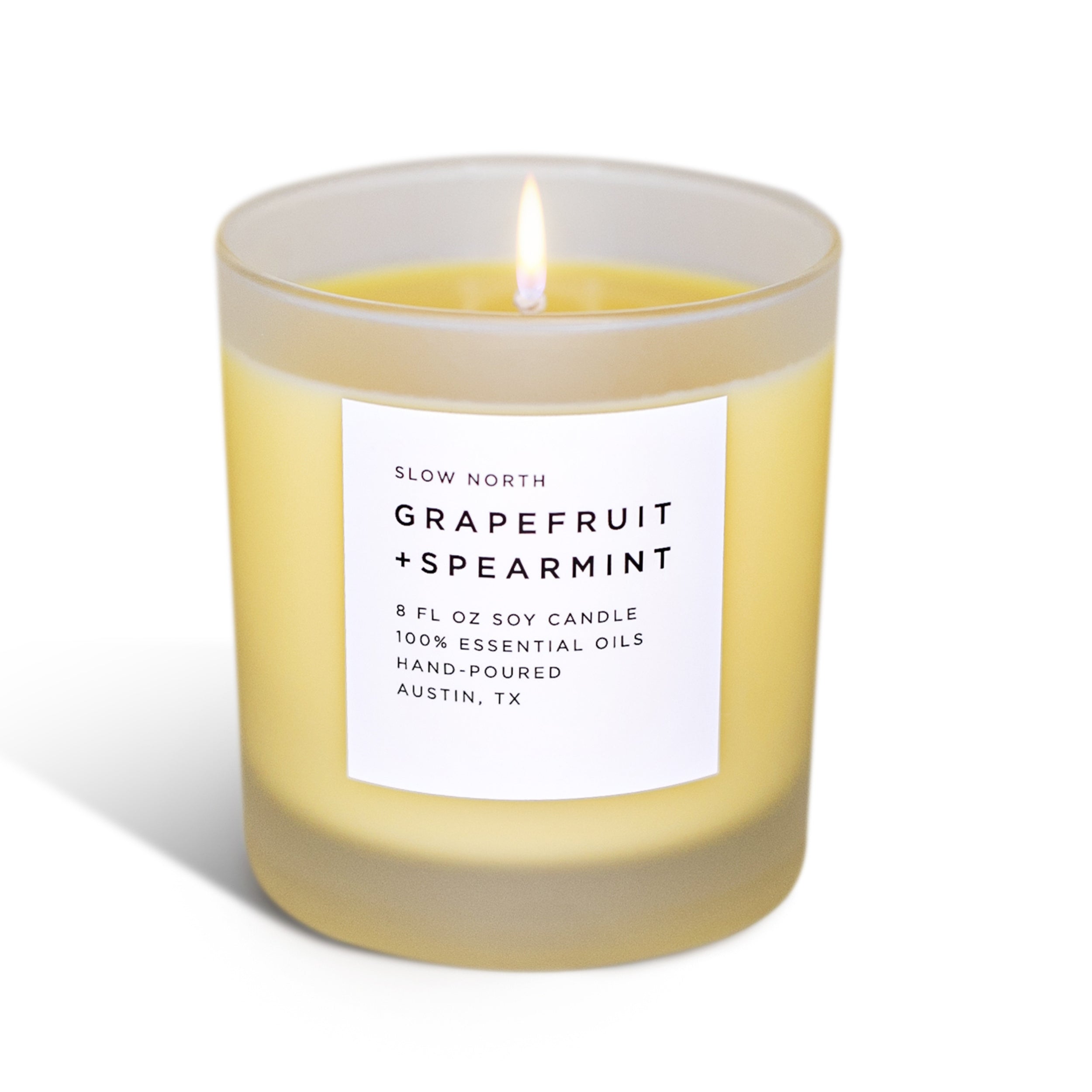Everything in life is cyclical. Seasons change, the moon waxes and wanes, the tides ebb and flow. The cycles of life are rhythmic, peaceful, and inspiring. Some of the earliest human beings lived in complete harmony with these cycles, adjusting their lifestyles and habits as the world around them changed.
These days, however, we’ve become somewhat resistant to change. Our modern lifestyles make it much easier to tune out the changing of seasons and keep plugging away as usual. But seasonal living is the embodiment of embracing change and going with the flow. Better yet, living in tune with those cycles can help us connect with the natural world, lower our environmental footprint, and become more resilient. Honestly, does it get any better than that?
Though it may take some adjusting, living in harmony with the seasons can be a very rewarding and mindful lifestyle. Here are some ways to get started.

Eat Seasonally
Adopting a seasonal diet is one of the best things you can do for yourself and for the planet. Eating seasonally means consuming produce that’s in season in your local region. Depending on where you live, that could mean buying fresh strawberries in the summer, apples in the fall, and leeks in the wintertime. Picking produce at its peak ripeness when it’s in season means not only that it’ll taste better, but also that it’s packed with nutrients that out of season produce usually isn’t.
Another perk of eating seasonally is that it’s gentler on the planet. Crops that don’t have to travel hundreds of miles to reach you have a lower carbon footprint.
Need some inspo for seasonal grocery shopping? Head over to your local farmer’s market! Farmers will typically bring goods from your region, so you can have the benefit of eating seasonally *and* supporting the local economy.
To find out what’s in season near you, check out the Seasonal Food Guide. And keep checking back here at Slow North for yummy seasonal recipe ideas!
Live In Tune With The Moon
Just as the seasons change on Earth, the moon also undergoes cyclical changes. About every four weeks, the moon completes a full cycle, transforming from the new moon to a full moon and back again. Throughout this cycle, the moon enters many different phases, all of which can be visibly differentiated with the naked eye. Each phase is associated with various rituals that can help you feel more balanced in your day to day life. Here are the moon’s phases:
• New moon: The darkest phase of the moon’s cycle represents new beginnings. This is a great time to plant seeds for the future and set intentions for the month ahead. The new moon is the best time to start new projects, plan out your goals, and release what no longer serves you. Journaling during the new moon is also highly recommended — it may help you clearly express your thoughts and priorities.
• Waxing moon: As the moon begins to expand, so do the visions and goals you made for yourself during the new moon. This is the time to spring into action. You’ll want to harness the momentum of the waxing moon to actualize your visions and continue building towards your goals.
• Full moon: About two weeks after the new moon, the full moon will reveal herself in all her glory. This phase of the moon represents abundance, fertility, transformation, and completion. It also represents illumination; you may notice solutions to questions or issues arise during this time. The full moon is the perfect time to honestly examine your work, life, and aspirations and assess what’s working and what’s not.
• Waning moon: The final moon phase is a period of surrender and release. During this time, the moon fades into darkness again, preparing for the next new moon phase ahead. As the moon wanes, reflect on what the past month has brought you, and shed what’s no longer needed to plant new seeds again.

Celebrate The Equinoxes and Solstices
Equinoxes and solstices alike have been celebrated across cultures for thousands of years. They occur at different points of the year and each carry their own spiritual symbolism.
There are only two times of the year when the Earth’s axis is tilted neither toward nor away from the sun, which results in an almost equal amount of daylight and darkness at all latitudes. These events are known as equinoxes and they occur around March 20th and September 23rd every year.
The autumn equinox symbolizes the balance between dark and light, feminine and masculine, and inner and outer. Though traditional autumn equinox rituals began as a celebration of the harvest, we can still take this time to reflect on how summer served us — and how we can prepare for the stillness and resting period of winter. The spring equinox, on the other hand, celebrates rebirth and growth. As the Earth comes alive again, so does our energy, and the vernal equinox (another name for the spring equinox) is the time to seek inspiration and new experiences.
Solstices occur when the Earth’s tilt towards the sun is either at its maximum or minimum. In the Northern Hemisphere, the sun appears at its highest point in the sky during the summer solstice, resulting in the longest period of daylight of the entire year. In the winter, the Earth’s tilt towards the sun is at its minimum, which brings us the shortest day of the year.
The summer solstice, often celebrated in various parts of the world as Midsummer, is a celebration of light and bountiful harvest. The summer solstice asks us to focus our energy towards the nourishment of ourselves and others. It reminds us that light always comes after darkness, and that, like the sun, we will rise every day to meet what life brings us.
The winter solstice calls on us to draw inwards. Gone are long summer days and warm nights; this period of life honors stillness and darkness. The winter solstice is aligned with the energy of introspection — don’t be afraid to focus on yourself during this time. Light some candles, turn your phone off, read your favorite book, and simply enjoy your own company.
Embrace The Seasons
Like the seasons, our own lives are marked by periods of growth, abundance, decay, and death. Honoring each season can sync these periods of our lives with the natural world, making us feel more connected and in tune with the universe.
The shift from season to season can be celebrated in ways unique to you. Think about what each season means to you and how you’d like to honor its arrival. What do the seasons represent? In what ways will you live in tune with their deeper meaning? The celebration or ritual you choose can be as small as leaving a pumpkin on the front stoop or as ceremonious as creating a winter solstice altar.

Listen To The Land
Seasonal changes aren’t just reflected in astrological events — life on Earth shifts, too. Connecting with the natural world is a wonderful way to embrace the seasons. You can do this in a few different ways.
A good old-fashioned nature walk is one of the simplest ways to embrace the seasons. Try getting outdoors with the onset of each season. As you wander, notice how your relationship to nature changes as the seasons change, too. How does air temperature make you feel? What looks and smells different than the last time you came to this spot? What looks especially beautiful outside this time of year?
If you have a green thumb, maintaining a seasonal garden can also help you forge a deeper connection to the seasonal cycles. Think of it as a very hands-on way to flow with seasonal shifts; as the seasons change, your tactics will need to change, too. In the fall, for example, you’ll want to plan for the spring blooms and plant bulbs that will stay dormant in wintertime. In the springtime, the soil will soften and warm, which makes it a great time to plant perennials that will last well into the summer. If you’re planting veggies, the seasons will also dictate what you grow and harvest — another great way to ensure you’re eating seasonally!
No matter how you do it, honoring the cycles of life allows you to flow with, instead of against, the energy forces that surround us. This can help us slow down, become more intentional, and live in a way that promotes inner peace and balance.
Cecilia Seiter
Cecilia is a freelance writer and contributor to Slow North. She writes largely about sustainability, especially as it applies to beauty, wellness, and the future of technology. She is a graduate of the journalism department at Cal Poly, San Luis Obispo and is based in Los Angeles, CA.
































